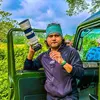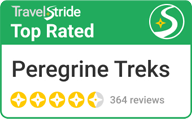Nepal Trekking Gear List
- Wednesday March 30, 2022
- 0
It is usual for a human being to get excited about the trip and carry almost everything. We believe it’s in human nature. Still, it would help to consider what you take for your trekking trip. There is a weight limitation on domestic flights and porters. Hence, we suggest you read the Nepal Trekking Gear List below and only carry essential things for the trip.
Important documents of Trekking Gear List
- Passports must be valid for six months, with extra passport-size photos and valid air tickets.
- Xerox copies of passport, visa application, and insurance papers.
- Cash of any currency for a visa and other activities
- Valid credit card; Cash/ ATM cards of International Standard Banks.
Head
- Headbands or scarves to prevent dust.
- Woolen hats to cover your ear.
- Headlight with extra batteries.
- UV protection sunglasses/ proper mountain glasses.
Upper Body
- Polypro shirts (1 half sleeve and two long sleeves)
- Light and portable thermal tops
- Fleece windcheater jacket
- Waterproof shell jacket
- Down jacket
- Gore-Tex jacket with hood
Hands
- One pair of lightweight gloves of any material (probably waterproof)
- Mittens consisting of Gore-Tex over mitt matched with a hot polar-fleece mitt liner (one each seasonal)
Lower Body
- Non-cotton innerwear.
- Hiking shorts and trousers (one pair each)
- Lightweight thermal bottoms (one pair-seasonal)
- Fleece or woolen trousers or waterproof shell pants, breathable fabric.
Feet
- Thin, lightweight inner socks, heavy poly or wool socks, and cotton socks( one pair each)
- Hiking boots with spare laces and ankle support (sturdy soles, water-resistant, ankle support, “broken-in”)- one pair
- Trainers or running shoes and sandals (one pair)
- Gaiters (to walk on snow terrain-winter only), optional, “low” ankle high version
Sleeping
- One sleeping bag (good to -10 degrees C or 14 degrees F)*
- Fleece sleeping bag liner (optional)
Rucksack and Travel Bags
- A medium rucksack (50-70 liters/3000-4500 cubic inches, can be used for an airplane carryon)
- One large duffel bag
- A small daypack/backpack with good shoulder padding for carrying your valuables
- Small padlocks for duffel-kit bags
- Two sizeable waterproof rucksack covers (optional)
Medical
- Handy, personal first-aid kit
- Aspirin, first-aid tape, and plasters
- Skin-blister repair kit
- Anti-diarrhea and anti-headache pills
- Anti-cough/ cold medicine
- AMS prevention pills: Diamox or Acetazolamide
- Stomach antibiotic: Ciprofloxacin, etc. Warning: do not bring sleeping pills as they are respiratory depressants.
- Water purification tablets or the water filter
- A set of earplugs
- Extra pair of sunglass, prescription glasses, and contact lens supplies
Practical Items
- Small roll of repair tape/duct tape, sewing-repair kit (one each)
- Cigarette lighter, a small box of matches (one each)
- Alarm clock/watch (one each)
- A digital camera with extra cards and batteries
- Extra-large Ziplocs
- Two reusable water bottles (one liter each)
- Multi-tool kit
- Four large, waterproof, disposable rubbish sacks
- Binoculars (optional)
- One compass or GPS (optional)
Toiletries
- A medium-sized quick-drying towel
- Toothbrush and paste Multi-purpose soap (preferably biodegradable)
- Deodorants
- Nail clippers
- Face and body moisturizer
- Female hygiene products
- Small mirror
- Personal Hygiene
- Wet wipes (baby wipes) Tissue /toilet roll
- Anti-bacterial hand wash or sanitizer
Extras/Luxuries
- Trail map/guidebook
- Reading book
- Journal/ notebook, pen, and music player
- Portable travel game, i.e., chess, backgammon, scrabble, playing cards (to help you pass the time at teahouses or camps)
- A modest swimsuit
- Lightweight pillowcase or stuffed neck pillow
This equipment and Trekking gear list will help you to arrange the trekking equipment for Nepal Trekking. If you have an additional query, please get in touch with us or call us at +977 98510 52413.
Nepal’s trails are steep, and every addition to your load counts! Review your Nepal Trekking gear list, and pare down items beforehand.
Second-hand Trekking Gear list
Other trekkers and climbers use second-hand camping and mountaineering equipment on Himalayan expeditions are often available for sale or rent in Kathmandu, Pokhara, Namche Bazaar, and waypoints along popular routes. You may even find new gear that went unused on expeditions. The road forming the southern border of Thamel in Kathmandu has shops with expedition kits, and do not be surprised if the shop owner with whom you are bargaining is a prolific climber.
Prices vary from cheap to outrageous, and quality is not uniform. Some trekkers sell equipment using notice boards in restaurants, hotels and KEEP. Packs, jackets, and other locally manufactured items often carry a counterfeit label. Such gears might only last one trek, but some are more durable.
There are now good outlet stores along Tridevi Marg in Thamel and Durbar Marg, the road that leads from the former royal palace, now the Narayanhiti National Museum. Some people can pick up everything they need in the city, but arriving at least minimally prepared is safer. If buying or renting in Nepal, be aware that quality is variable, and a sleeping bag with an advertised rating of —20°C will not likely match expectations.
Clothing
Hiking Nepal’s steep terrain can cause a swift buildup of body heat, especially carrying a loaded pack up a sun-drenched hill. Conversely, in high-altitude areas, the temperature will drop rapidly, especially in the shade of the mighty Himalayas, when the sun has set or is behind the clouds. It will be hard if your clothes are wet and cold from sweat. Hence, it is essential to have the ability to remove or add items to adjust quickly to conditions. Although comfortable, clothes made of all-cotton material are not the best choice as cotton absorbs and holds moisture. The first layer of clothing should keep you dry by wicking moisture from the skin to the next layer.
There are many brand specialties in this area. Long thermal underwear is necessary at higher altitudes, especially during winter. Thermals made of petroleum-based synthetic polypropylene might be a functional inner layer, although it has a reputation for quickly becoming foul-smelling. Nylon is durable. Silk is lightweight yet needs extra care and might soon come apart at the seams. (There are now silks on the market that do not rely on the mass killing of production caterpillars. These include ahimsa silk, peace silk, vegetarian silk, and tussah or wild silk.)
The next layer should provide warmth. We traditionally choose Woolen Clothing for cold because it keeps us warm. A sweater or synthetic fiber-insulated fleece (pile) jacket works well in wet weather and quickly dries. Underarm “pit zips” allow ventilation, if not the removal of entire sleeves.
The outer layer should add warmth and keep you dry as well. A waterproof, breathable shell that is soft and light works well. Aim for a sizeable zip-out liner to cover a sweater or fleece jacket. Check to ensure that the seams have been adequately sealed.
Packs
Though many well-designed packs are available, choose one that feels comfortable when loaded, allows easy access, and can expand capacity when necessary. Carry a spare plastic buckle, at least for the waistband (keep fasteners engaged while not wearing the pack to protect them from being stepped on and possibly broken). Porters’ equipment and supplies can be packed in sturdy, bright-colored (for recognizability) duffel bags, preferably ones that can be locked.
Shelter
Your route and preferred style dictate whether you need a tent. A tent is necessary if you prefer to camp or desire privacy where there aren’t lodges. Generally, one large enough to sit up and house others, such as porters, in an emergency is best. Weight, seasonality, and ease of setting up are factors to consider.
A three-season tent with ventilation and rain flying over the openings is versatile enough for most trekkers. Properly seal the seams. Check out setup instructions, practice before you depart, and do not forget a groundsheet to keep gear clean and dry and prevent dampness from being wicked up from the ground.
However, a lightweight “emergency blanket” (aluminized polyester), bivouac shelter, or plastic sheet can show he carried for an emergency shelter.
Cooking Gear
Gear is available in Kathmandu. Regulations require those trekkers and their porters, cooks, and guides to be self-sufficient in national parks. Trekkers should use stoves powered by kerosene, propane, butane, or other fuel rather than wood, especially in high-altitude and conservation areas.
Kerosene is the only fuel available in the hills, although some shops on popular routes may have mixed-fuel canisters (e.g., Primus) for sale. Buying cartridges at trekking shops in Kathmandu that sell stoves capable of using portable canisters and kerosene is better. However, the kerosene available is often impure and clogs up most stoves necessitating frequent cleaning of the fuel jet. Become familiar with stove operation before the trek and carry spare parts of critical components.
Sleeping Gear
A down or synthetic fiber sleeping bag is usually necessary for comfort at temperatures below freezing. Usually, the lodges have quilts, comforters, and blankets, but you cannot always rely on their presence, adequacy, and cleanliness, especially during busy times.
Many trekkers along the popular routes manage without a sleeping bag, but going without one is not advised on high-altitude trekking trails. In lodges along popular trekking trails, mattresses and pillows are available, but not everywhere, especially during high season when late arrivers sometimes sleep in a dining hall. Although most lodges will have foam padding, those camping might need an air mattress, foam pad, or inflatable pad for a comfortable night’s sleep.
Eye-Wear
Sunglasses should absorb ultraviolet light and sunglasses that do not can do more harm than good by opening the pupil and exposing the eye to potentially damaging UV rays. A visor to shade the eyes from the sun is an ideal addition. If you wear eyeglasses or contact lenses, bring a spare pair and a copy of the prescription if replacements are needed. If you wear contact lenses, do not neglect regular cleaning. Infections are more prevalent in Nepal. Use boiled water. If you do not want to bother with cleaning, bring disposable extended-wear contact lenses with less risk of infection, although the packaging can be burdensome.
Perhaps some people will naturally use Nepal’s trails to strengthen their eyes by going without glasses and contacts and training the eyes to focus alternately on things far and near and in differing light conditions. Keep in mind that calling off the trail is a leading cause. Of injuries and infrequent deaths of trekkers
Water Containers
Each person should have at least a 1-quart (liter) water bottle. Plastic and lightweight stainless-steel or aluminum containers can be found in trekking shops in Nepal. Stainless steel or aluminum bottles can be ideal for storing water that has been boiled and is still hot. Encasing the bottle in a clean sock or hat or wrapping another item of clothing around it will make a source of heat that can be kept close to the body or even placed in a sleeping bag for added warmth.
Other Nepal Trekking Gear List
Footwear supporting the ankles is highly recommended, and lightweight foam or rubber sandals are ideal for changing at the end of the day.
A Leatherman or Swiss Army Knife gadget combination can be helpful but unnecessarily burdensome unless multi-functional tools are needed. Often a dull pocket knife will do if anything at all.
Umbrellas can be used against rainfall, for protection from the sun on hot days, and for privacy while answering nature’s call. Collapsible ski poles and walking sticks (Lauro in Nepali), often made of lightweight bamboo, can help significantly ease the load and impact on the knees.
Bring several handkerchiefs or bandannas. A scarf can be helpful as a makeshift face mask in windy, dusty areas and during vehicle travel and dry cups, plates, and hands. You can keep a separate bandana for a usual runny nose that accompanies colds and upper-respiratory infections—or learns to blow your Nepali nose style, covering each nostril in turn and blowing out the other. Petroleum jelly, ChapStick, and lip balm are suitable to prevent or treat chafing in cold weather.
For women, a reusable menstrual cup (e.g., Mooncup) is an ecologically sound alternative to tampons and sanitary napkins, ideal for travel, and lasts for years. You should become familiar with using and cleaning it before relying on it during a trek.
Pack biodegradable soap, a washcloth or towel, and a toothbrush. Bring a headlamp, a small flashlight (torch), and spare batteries (lithium is best), especially to power the modern camera. Good batteries will rarely be available outside the main trekking routes in the hills. Above all, having rechargeable batteries and carrying extra charged battery packs is better. Bring a universal adapter – electricity averages 220 volts/50 cycles in Nepal.
Nepal is becoming increasingly electrified, with more and more places along the popular routes to recharge. Entrepreneurs might sometimes take a fee to charge batteries. Carry spares and remember that less-frequented trails might offer only solar power without the accessories to fit recharging devices. Nepal has no battery recycling facilities, so bringing spent cells back to your home country for proper disposal is considered environmentally ethical.
Consider earplugs (several pairs, as they are easily lost) for noisy hotels, buses, and the occasional loud dog in the depths of the night. Having a Global Positioning System (GPS) device or compass for high-mountain travel is wise. A GPS can be unreliable in sections of Himalayan drainages where steep gorges diminish satellite reception.
Insects are not usually a problem in the high country, and malaria is rare in Nepal trekkers. Still, visitors traveling extensively in the lowlands during the warmer months or the monsoon might want to use insect repellent and a mosquito net while sleeping. Repellents with picaridin and DEET (or N, N-diethyl meta-toluamide) are effective against mosquitoes or natural repellents such as citronella or eucalyptus oil-based repellents.
Insecticide sprays and powders (those containing pyrethrins or permethrin are safest) may help in the sleeping bag and can be applied to the netting. Anti-leech oil can be found in some Kathmandu pharmacy shops for monsoon treks.
A supply of duct tape can serve as an all-purpose, temporary fix for various situations. Several feet of tape can be wound around a flashlight handle or water bottle to store for future needs.
If you play a portable musical instrument, consider bringing it along. A harmonica, recorder, or flute can quickly ease communication barriers. Consider other social and entertainment skills you might share, such as portrait drawing or simple magic tricks. Most trekkers carry reading matter and writing materials, and hotels along the popular routes often have paperbacks to sell or trade.
A pack of cards or miniature versions of popular board games (such as Scrabble) can be an excellent way to pass the time, liven up a restaurant, and get to know fellow trekkers.
Having a particle mask to protect you from dust and fumes in cities and on bus journeys is a good idea. These are available in Kathmandu pharmacies.
LEAVE NO TRACE
- Dispose of Waste Properly (Pack It In, Pack It Out)
- Leave What You Find
- Respect Farm Animals and Wildlife
- Be Considerate of Others, Local Customs, and Traditions
The Minimum Impact Code of Conduct for model trekkers, as suggested by ACAP and KEEP and includes the following suggestions:
- Encourage lodges and trekking companies in their efforts to conserve environmental resources.
- Campfires and hot showers are a luxury, primarily when locals use fuel only for cooking.
- Use washing and toilet facilities provided, or, if none are available, make sure you are at least 30 meters (100 ft) from any water source—bury excreta at least 15 cm (6 in) and use biodegradable toiletries.
- Limit your use of non-biodegradable items and pack them out.
- Respect religious shrines and artifacts.
- Please don’t give money, sweets or other things to begging children.
- Taking photographs is a privilege, not a right. Ask for permission before taking pictures, and respect people’s desires.
- Dress modestly, in line with local customs, and avoid outward displays of physical affection.
- You represent outside culture, and your impact lingers long after returning home.
You might see garbage bins outside lodges, shops, and popular trekking trails. Usually, the contents, including harmful plastics, are burned, and metals are discarded. Litter is often pitched off the backsides of lodges and shops or piled on a nearby site. Talk to the lodge owners and operators about your preferences for disposal. You can influence them because they want your business.





